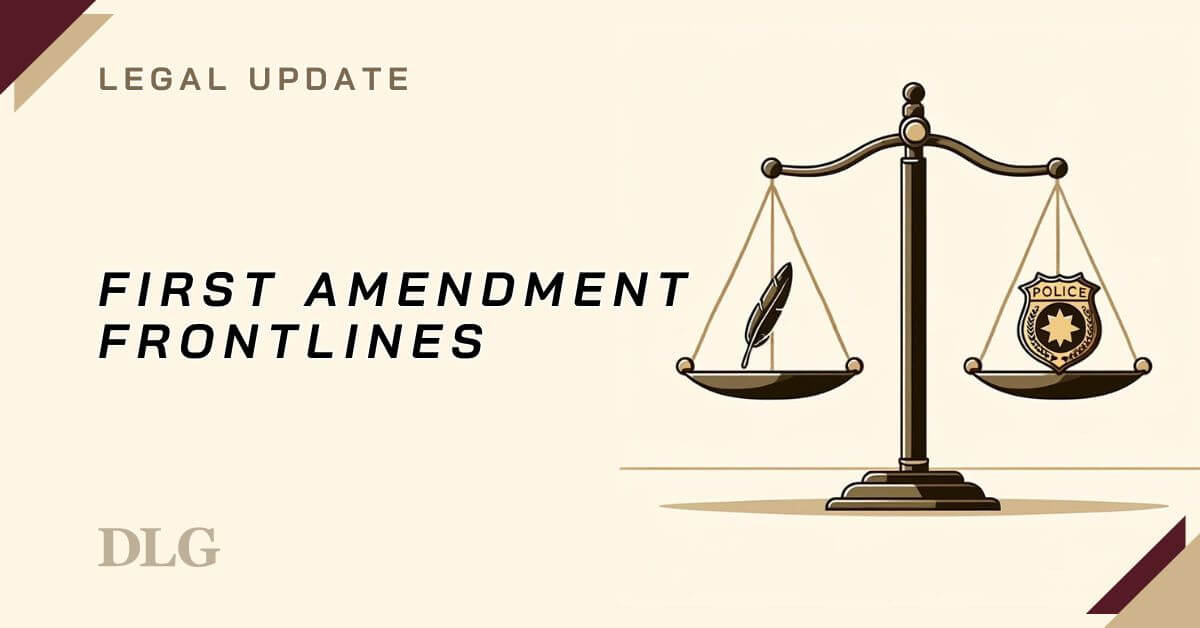The best way to combat “custom” is through the implementation of clear policies, comprehensive training on those policies, and close and effective supervision. To this end, innovations in law enforcement training have benefited and will continue to benefit departments. Effective, comprehensive training, however, must maintain focus on legal objectives and “clearly established law.”
The 2020–2021 U.S. legislative session resulted in an all-time high of proposed legislation that focused on controlling police policies and practices. According to an article from Daigle Law Group:
Forty-eight states have proposed legislation that would have a negative impact on law enforcement or require a change in practice or policy. When certain policy items become a requirement under new laws, they often result in significant consequences for officers that may include suspension, decertification, personal liability, and criminal sanctions.
Fifteen states have proposed legislation to abolish or limit qualified immunity, twenty-one states proposed legislation to subject officers to personal liability for lawsuits, and nineteen states want to create stricter standards [for qualified immunity] than those found in Graham. When the courts give officers guidance, it creates clearly established law that [translates into required] training standards. When agencies choose to ignore clearly established law, they assume the liability when their training, policies, and standards of conduct are found to be inconsistent with court rulings.1
The Monell liability theory (“pattern and practice liability”) was created in Monell v. Department of Social Services of the City of New York. Most of the time, the claim alleges the agency failed to properly train or supervise the officer and that failure led to the alleged injury. Often, the court puts it this way: The plaintiff must show that an official agency policy was the “moving force behind the violation of a constitutional right.”2
In City of Canton v. Harris, the U.S. Supreme Court ruled that a municipality may be held liable in certain circumstances for constitutional violations caused by its failure to train employees. The Supreme Court in Harris holds that inadequate training may serve as a basis for §1983 liability where the failure to train amounts to “deliberate indifference” to the constitutional rights of persons with whom the police may come into contact.3 In the court’s view, the issue of the degree of fault is fundamentally related to the policy requirement of Monell.
The court explained that to establish Monell liability on a failure-to-train theory, a plaintiff must prove:
- (1) the city failed to train or supervise the officers involved; (2) there is a causal connection between the alleged failure to supervise or train and the alleged violation of the plaintiff’s rights; and (3) the failure to train or supervise constituted deliberate indifference to the plaintiff’s constitutional rights.4
The Supreme Court held that liability may be imposed where
- in light of the duties assigned to specific officers or employees, the need for more or different training is so obvious, and the inadequacy so likely to result in the violation of constitutional rights, that the policymakers of the city can reasonably be said to have been deliberately indifferent to the need.5
Under these circumstances, “the failure to provide proper training may fairly be said to represent a policy for which the city is responsible.”6
Evolution of both technology and the public demands on law enforcement personnel have rapidly redefined the job of policing. Actions of the police have dominated nearly every conversation across the United States. Law enforcement actions monopolize nightly news broadcasts and social media posts and often lead to quickly escalating public protests. The public expects law enforcement personnel to swiftly solve intricate problems and circumstances, but often do not fully understand the difficulties of doing so. To perform their jobs effectively and safely, law enforcement officers are required to be educated on a vast array of ever-changing topics. In light of this truth, the author would argue that the training made necessary by present-day conditions cannot solely be met via the traditional in-person classroom approach.
A 2010 study conducted by the Department of Education found that online and instructor-led training was statistically equivalent in terms of learning outcomes. In 43 out of 50 learners, the research showed that students in online conditions performed modestly better, on average, than those learning the same material through traditional face-to-face instruction.7 Learning outcomes for students who engaged in online learning exceeded those of students receiving face-to face instruction, with an average effect size of +0.20 favoring online conditions.8 The analysis from the Department of Education concluded that, overall, students doing some, or all, of a course online would rank almost 10 percent higher than the average classroom student.
Technology has closed the accessibility gap of in-person training. Distance learning makes it possible for visionary experts to now reach students who would not typically be able to attend their training sessions. Online learning offerings are being designed to enhance the quality of learning experiences and outcomes. One common conjecture is that learning a complex body of knowledge effectively requires a community of learners, and that online technologies can be used to expand and support such communities. By bringing together students from different environments with vastly different experiences, officers are able to share, relate, and learn from one another in a way that was not possible before. Class discussion boards have become avenues of discourse among student officers regarding policies, best practices, and ways to successfully engage their communities. Online, collaborative learning environments allow officers to share what worked for them and where they went wrong so others do not have to learn through trial and error. This is in contrast to in-person training where many officers are trained with others in their own department or neighboring departments, where the participants’ experiences are likely similar.
While advances in technology may increase the convenience of online learning and may enhance the adult learning structure, the legal requirements mean that part of that training must remain the same—namely, the content. In determining if a department has met the Monell requirements of “failure to train or supervise,” the plaintiff must prove that the actual training constituted “deliberate indifference” to the plaintiff’s constitutional rights. A department is held responsible for the content that is provided to its employees during training. The legal requirements mandate that that new and innovative training still meets the requirements of traditional classroom-based training programs. The requirements set an expectation that that the department will validate the instructors and ensure the content meets training requirements and addresses the department’s policies. It is recommended that after providing generic training, a department should follow up with specific training on its policies.
Given the clear benefits of online training, agency executives are encouraged to take advantage of this effective tool readily available to them to provide their personnel with comprehensive, current training to meet the challenges associated with the ever-changing landscape of law enforcement. The knowledge and experience gained through this process will prove invaluable to the officers and the agency.9 Nonetheless, when implementing these innovative training methods, do not neglect to confirm the content meets the legal standards in your jurisdiction to reduce risk to your officers, agency, and community.
Notes:
1Sean Case and Eric P. Daigle, “Finding a Way Forward – Taking Back Responsibility in Law Enforcement,” Legal Update Articles, DLG Learning Center, November 16, 2021, https://dlglearningcenter.com/finding-a-way-forward-taking-back-responsibility-in-law-enforcement.
2Monell v. Department of Social Services of the City of New York, 436 U.S. 658 (1978).
3City of Canton v. Harris, 489 U.S. 378 (1989).
4Harris, 489 U.S. 378.
5Harris, 489 U.S. at 390.
6Harris, 489 U.S. at 390.
7The meta-analysis was run also with just the 43 studies with older learners. Results were very similar to those for the meta-analysis including all 50 contrasts. Variations in findings when K-12 studies are removed are described in footnotes. U.S. Department of Education, Evaluation of Evidence-Base Practices in Online Learning: A Meta-Analysis and Review of Online Learning Studies (Washington, DC: U.S. Department of Education, 2010), https://www2.ed.gov/rschstat/eval/tech/evidence-based-practices/finalreport.pdf.
8The + (plus) sign indicates that the outcome for the treatment condition was larger than that for the control condition. A – (minus) sign before an effect estimate would indicate that students in the control condition had stronger outcomes than those in the treatment condition. Cohen suggests that effect sizes of .20 can be considered “small,” those of approximately .50 “medium,” and those of .80 or greater “large.” Jacob Cohen, “A Power Primer,” Psychological Bulletin 112, no. 1 (1992): 155–159.
9Eric P. Daigle, Online Law Enforcement Training Programs White Paper (DLG Learning Center, 2022), https://dlglearningcenter.com/online-law-enforcement-training-programs-white-paper.
This article originally appeared on IACP Police Chief Magazine. You can find the original article using the following URL:
https://www.policechiefmagazine.org/chiefs-counsel-balancing-training-innovations-with-legal-standards/



